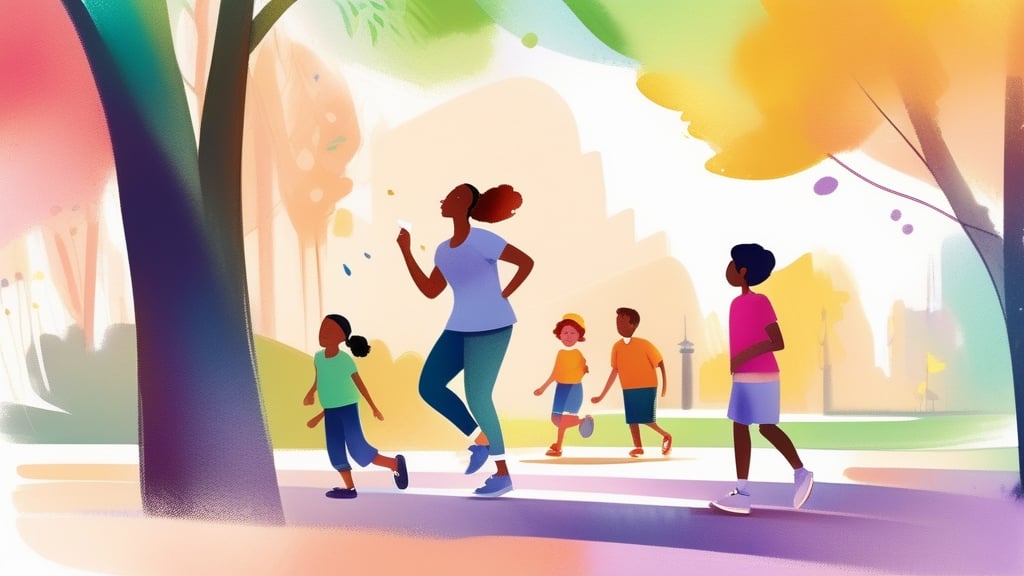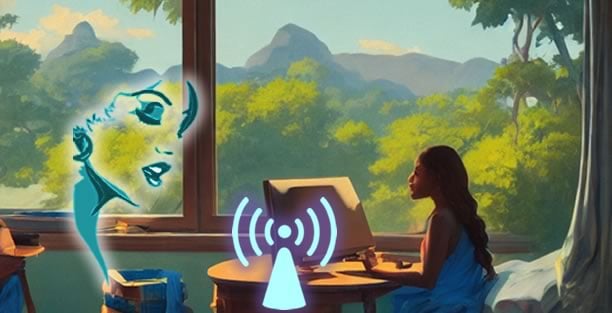Learn Bengali
| English | Bengali | |||
|---|---|---|---|---|
| Hello | হ্যালো | |||
| Hello | আসসালামু আলাইকুম | |||
| Good evening | শুভ সন্ধ্যা | |||
| Goodbye | বিদায় | |||
| Goodbye | খোদা হাফেজ | |||
| See you later | আবার দেখা হবে | |||
| Yes | হ্যাঁ | |||
| No | না | |||
| Please! | অনুগ্রহ করে! | |||
| Thanks | ধন্যবাদ | |||
| Thanks a lot | অনেক ধন্যবাদ | |||
| Thank you for your help | আপনার সাহায্যের জন্য ধন্যবাদ | |||
| Thank you for your help | তোমার সাহায্যের জন্য ধন্যবাদ | |||
| Don't mention it | এটি বলতে হবে না | |||
| Ok | ঠিক আছে | |||
| How much is it? | এটার দাম কত? | |||
| Sorry! | দুঃখিত! | |||
| I don't understand | আমি বুঝতে পারছি না | |||
| I get it | আমি এটা বুঝেছি | |||
| I don't know | আমি জানি না | |||
| Forbidden | নিষিদ্ধ | |||
| Excuse me, where are the toilets? | মাফ করবেন, টয়লেটটি কোথায়? | |||
| Happy New Year! | শুভ নববর্ষ! | |||
| Happy birthday! | শুভ জন্মদিন! | |||
| Happy holiday! | ছুটির দিনের শুভেচ্ছা! | |||
| Congratulations! | অভিনন্দন! |
হ্যালো (Hyālō)! Welcome!
Welcome to this enhanced conversation guide. We've taken a practical approach to help you learn the basics of a language quickly.
We suggest you start by memorizing practical words and phrases that you can use daily at home and then when you travel.
Practicing saying vocabulary aloud, numbers for example, is a good exercise that can be practiced at any time of day. It will get you used to the sounds of a language.
How to learn Bengali
- Learn the alphabet and pronunciation of sounds. Start by learning the Bengali alphabet and the pronunciation of letters. This will help you read and pronounce Bengali words correctly.
- Learn the basics of vocabulary. Start by learning common words and phrases that you can use in everyday conversation. Mastering the specific vocabulary of the language will help you understand the words you hear or see written.
- Practice speaking. One of the best ways to learn a language is to listen to native speakers speak it. Watch YouTube videos, movies, and TV shows. Then repeat the words and phrases to improve your pronunciation. Even just talking to yourself, this exercise practiced regularly will make you progress dramatically (we created a unique tool dedicated to this training).
- Learn the basics of grammar. Like all languages, Bengali has its own grammatical rules. Learn the basics of Bengali grammar, such as verbs, nouns, articles, and pronouns. This will help you construct simple correct sentences in Bengali.
- Find a conversation partner. Practice speaking with native speakers or other learners. Use the words and phrases you've learned to introduce yourself, talk about your interests, ask questions, etc. The more you practice, the more you will improve your comprehension and expression.
- Read in Bengali. Read books, newspapers, and magazines in Bengali to help you better understand the language.
- Find the right teaching resources. There are many books, online courses, apps, and websites that can help you learn Bengali. Choose the resources that suit you and that you feel are appropriate for your level and goals.
- Join a language class with a teacher. Taking a class with a qualified teacher can help you learn the language faster. There are many sites that allow you to find qualified teachers.
- Anticipate periods of stagnation. After a few months, you'll feel like you're not making any progress: there are always periods when progress is rapid and visible, followed by periods when progress is no longer noticeable. The best way to get through these difficult periods is to continue to improve by diversifying your learning sources.
- Be regular and consistent. It is better to spend a few minutes a day practicing than an hour once a week. Learning a new language can take time and patience, but by persevering, you will eventually reach your goal of mastering Bengali. Keep studying and practicing to improve your skills and reach your learning goals. And never lose sight of this: fun is the best driver of any learning.
Is it possible to learn Bengali on your own?
We're not going to lie to you, it's not easy to learn a language alone.
But it's always worth starting with an accessible, free online course if it gets results. It's very motivating to be able to say a few hundred important words after only a few weeks!
We've taken a practical, hands-on approach to learning to speak a language easily and quickly: we suggest that you start by memorizing practical words, phrases, and sentences that you can use every day at home to practice and that will then come in handy when you travel.
Practicing pronouncing vocabulary aloud, numbers for example, is a good exercise that can be practiced at any time of the day. This will get you used to the sounds of the language, and make it familiar to listen to, and once your vacation begins in Dhaka, Chittagong, Khulna or another Bangladeshi city, you will be surprised at how familiar and easy to understand it already is.
Also, using a pocket dictionary will always come in handy when traveling to find translations of unfamiliar words and expand your vocabulary regularly.
About Bengali
Bengali belongs to the Indo-Aryan language family and is closely related to other Indo-Aryan languages spoken in the Indian subcontinent, such as Hindi and Urdu. It originated in the Bengal region, which covers much of Bangladesh and eastern India. Bengali evolved from Prakrit, an ancient Indo-Aryan language, and began to take shape around the 7th century. Bengali literature has a long and rich history dating back over a thousand years, and the language is now spoken by approximately 230 million people worldwide.
Bengali is spoken in both Bangladesh and India. Although both variants are mutually understandable, there are some notable differences between the two.
The pronunciation may vary slightly between the two countries, with some sounds being pronounced differently. There may also be differences in vocabulary and grammar between the two variants.
The Bengali offered here is the one spoken in Bangladesh.
Some words in Bengali can be compared to those of other Indo-European languages, such as Sanskrit (Indo-Iranian language), Latin (Italic language), English (Germanic language), and French (Romance language).
Here is an example:
| Bengali | mata |
| Sanskrit | matar |
| Latin | mater |
| English | mother |
Why speak Bengali when traveling?
Make the most of the trip
Bengali is primarily spoken in Bangladesh and the Indian state of West Bengal, but it is also spoken in other parts of India and in other countries such as Pakistan, the United Kingdom, the United States, Canada, Saudi Arabia, and Western Europe. About 250 million people speak Bengali worldwide, making it one of the most widely spoken languages in the world.
Whether you're going to spend a few days with friends on a pleasure trip or you're on a business trip, nothing will be more helpful than being able to slip in a few words in the language of your interlocutors, who will appreciate your effort and will certainly be more inclined to help you.
If you can speak Bengali and communicate with the people, you can fully enjoy your trip. You will understand and feel the culture of the country. A good command of the Bengali language is essential.
Discover the country's most beautiful landscapes
Bangladesh is a tropical country with beautiful scenery, but few tourists. To experience its verdant rice fields and breathtaking waterfalls, it's necessary to get out of the big cities and explore the less accessible areas, such as the Chittagong coastline, home to the world's longest sandy beach.
However, the language barrier can be a real obstacle, as most Bangladeshis do not speak English. Therefore, learning a few words and phrases in Bengali is important to get around easily and communicate with the locals.
In the southeastern part, there are natural and hilly areas like the Chittagong Hill Tracts, as well as sandy beaches, and these areas are part of the Chittagong Division. The most notable beach, Cox's Bazar, is in the running for the title of the longest uninterrupted sandy beach in the world.
In the southwestern part, mainly in the Khulna division, there is a forest that is the largest mangrove forest in the world, with the Royal Bengal tiger and the spotted deer, called Sundarban. The sixty-domed mosque of Bagerhat, important from a historical and architectural point of view, is a remarkable site. In the northeast of the country, in the division of Sylhet, there is a green carpet of tea trees on small hills. The preserved natural forests are a great attraction. Migratory birds in winter, especially in the haor areas, are terribly attractive in this area.
In the northern part, which includes the Rajshahi division, there are archaeological sites, including Puthia Temple in Rajshahi, the largest and oldest archaeological site, Mahasthangarh in Bogra, the largest Buddhist monastery, Paharpur in Naogaon, the most ornate Hindu terracotta temple, Kantaji Temple, and many rajbaris or palaces of former zamindars, and many others.
Meet one of the most isolated tribes in modernity
Bengali is the native language of 189 million people around the world, but it is in Bangladesh that you can discover one of its most fascinating features. Indeed, this country remains one of the few disconnected from the modern world, and it includes many ethnicities, including a tribe living in a very different way.
One of them is the resilience of its people to natural disasters. Despite the frequent floods, cyclones, and other extreme weather events that hit the country, Bangladeshis have developed innovative ways to adapt and survive.
For example, people in flood-prone areas have built floating houses and boats to get around, while farmers have adopted water-friendly farming techniques. The government has also put in place disaster preparedness programs and early warning systems to minimize human and material losses.
The resilience and adaptability of Bangladeshis in the face of climate challenges are therefore a remarkable positive that deserves to be highlighted.
By learning this language, you will be able to discover a fascinating and amazing world, where ancient traditions and customs are still very much present. This could be an unforgettable experience, which will allow you to see the world from a new perspective and expand your cultural horizons.
How to successfully achieve good pronunciation within a week to a month
To get started, use our list of useful phrases and repeat them several times a day. Avoid overloading your brain with words and phrases you won't need on your trip.
Then, dedicate time each day to your learning. Being diligent and consistent is crucial to making rapid progress. Don't hesitate to review what you've learned regularly to better memorize it.
Finally, to improve your pronunciation, practice listening to native speakers, watch videos, or listen to foreign language podcasts. By imitating sounds and intonations, you can improve your pronunciation and understanding of the language.
Here are the 17 topics covered in this training course for speaking Bengali
- Essentials: Learn basic expressions to get by in daily life. In Bengali, these phrases are essential for navigating the bustling markets of Dhaka or asking for directions in the historic alleys of Chittagong.
- Conversation: Master the basics of conversation to interact with locals. Bengalis are known for their warm hospitality, and being able to converse in their language can enrich your encounters.
- Learning: Discover the basics of language learning in Bengali. Bangladesh's educational system highly values language learning, and knowing a few local tips can accelerate your progress.
- Colours: Familiarize yourself with colours in Bengali. Local markets and festivals, such as Durga Puja, are vibrant with colours, and knowing the names of colours will help you better appreciate these visual experiences.
- Numbers: Learn to count in Bengali. Whether bargaining at the bazaar or understanding bus schedules, numbers are omnipresent in daily Bangladeshi life.
- Time tracking: Understand how to tell and ask for the time. Punctuality can be flexible in Bengali culture, but knowing how to read and say the time will be very useful, especially for catching ferries and trains.
- Taxi: Learn useful phrases for taking a taxi. Navigating the bustling streets of Dhaka by taxi or rickshaw can be an adventure, and knowing a few key expressions will make your life easier.
- Family: Familiarize yourself with family terms. Family is at the heart of Bengali culture, and understanding kinship terms can enrich your social interactions.
- Feelings: Learn to express your emotions. Bengali culture values personal relationships and the communication of feelings, which can help create deeper connections with the locals.
- Bar: Know the expressions to get by in a bar. While alcohol is not ubiquitous, some places in Dhaka or international hotels have bars where you can socialize.
- Restaurant: Master restaurant vocabulary. Enjoying Bengali cuisine, rich in flavors and spices, is an experience not to be missed, and knowing how to order in Bengali will enrich this culinary adventure.
- Parting: Learn to say goodbye. Goodbyes are important in Bengali culture, often accompanied by wishes for safety and happiness.
- Transportation: Familiarize yourself with transportation terms. Whether by bus, train, or boat, transportation is an integral part of daily life and travel in Bangladesh.
- Hotel: Know useful phrases for staying in a hotel. The burgeoning hotel industry in Bangladesh, especially in Dhaka and Cox's Bazar, is becoming increasingly tourist-friendly.
- Looking for someone: Learn to ask where someone is. In crowded cities or during large religious and cultural celebrations, it is useful to know how to look for someone in Bengali.
- Beach: Familiarize yourself with beach vocabulary. Cox's Bazar, the longest natural beach in the world, is a prime destination where knowing a few Bengali words can enhance your stay.
- In case of trouble: Learn phrases to handle emergencies. Whether asking for medical help or reporting a problem, these expressions are crucial for ensuring your safety while traveling.
The Bengali alphabet
The Bengali alphabet consists of 35 consonants and 11 vowels, which can make learning the language difficult for people used to the Latin alphabet. The letters can seem more like symbols than letters, which can make it difficult to remember. Also, in Bengali, letters can overlap and share the same vertical line.
However, once you have overcome these two obstacles, i.e., learning the alphabet and the different letter combinations, you can begin to learn the pronunciation of each letter and acquire new words. It is important to note that the Bengali language is very musical and pleasant to hear once you have mastered the pronunciation of its letters.
| Bengali | Transliteration | Sound |
|---|---|---|
| Vowels | ||
| অ | a | as in 'father' |
| আ | ā | as in 'car' |
| ই | i | as in 'sit' |
| ঈ | ī | as in 'see' |
| উ | u | as in 'put' |
| ঊ | ū | as in 'school' |
| ঋ | ṛ | as in 'rhythm' |
| এ | e | as in 'bed' |
| ঐ | ai | as in 'aisle' |
| ও | o | as in 'go' |
| ঔ | au | as in 'out' |
| Consonants | ||
| ক | ka | as in 'kite' |
| খ | kha | as in 'khaki' |
| গ | ga | as in 'go' |
| ঘ | gha | as in 'ghost' |
| ঙ | ṅa | as in 'sing' |
| চ | ca | as in 'chop' |
| ছ | cha | as in 'chap' |
| জ | ja | as in 'jug' |
| ঝ | jha | as in 'genre' |
| ঞ | ña | as in 'canyon' |
| ট | ṭa | as in 'tap' |
| ঠ | ṭha | as in 'Thai' |
| ড | ḍa | as in 'dog' |
| ঢ | ḍha | as in 'Dharma' |
| ণ | ṇa | as in 'panda' |
| ত | ta | as in 'tom' |
| থ | tha | as in 'thumb' |
| দ | da | as in 'dot' |
| ধ | dha | as in 'that' |
| ন | na | as in 'nap' |
| প | pa | as in 'pot' |
| ফ | pha | as in 'photo' |
| ব | ba | as in 'bat' |
| ভ | bha | as in 'bhajan' |
| ম | ma | as in 'mat' |
| য | ya | as in 'yes' |
| র | ra | as in 'rat' |
| ল | la | as in 'lap' |
| শ | śa | as in 'shun' |
| ষ | ṣa | as in 'shut' |
| স | sa | as in 'sat' |
| হ | ha | as in 'hat' |
| ড় | ṛa | as in 'rhubarb' |
| ঢ় | ṛha | as in 'rhino' |
| য় | ẏa | as in 'yes' |
| ং | ṁ | as in 'song' |
| ঃ | ḥ | as in 'aha' |
| ঁ | ˜ | as in 'candle' |




